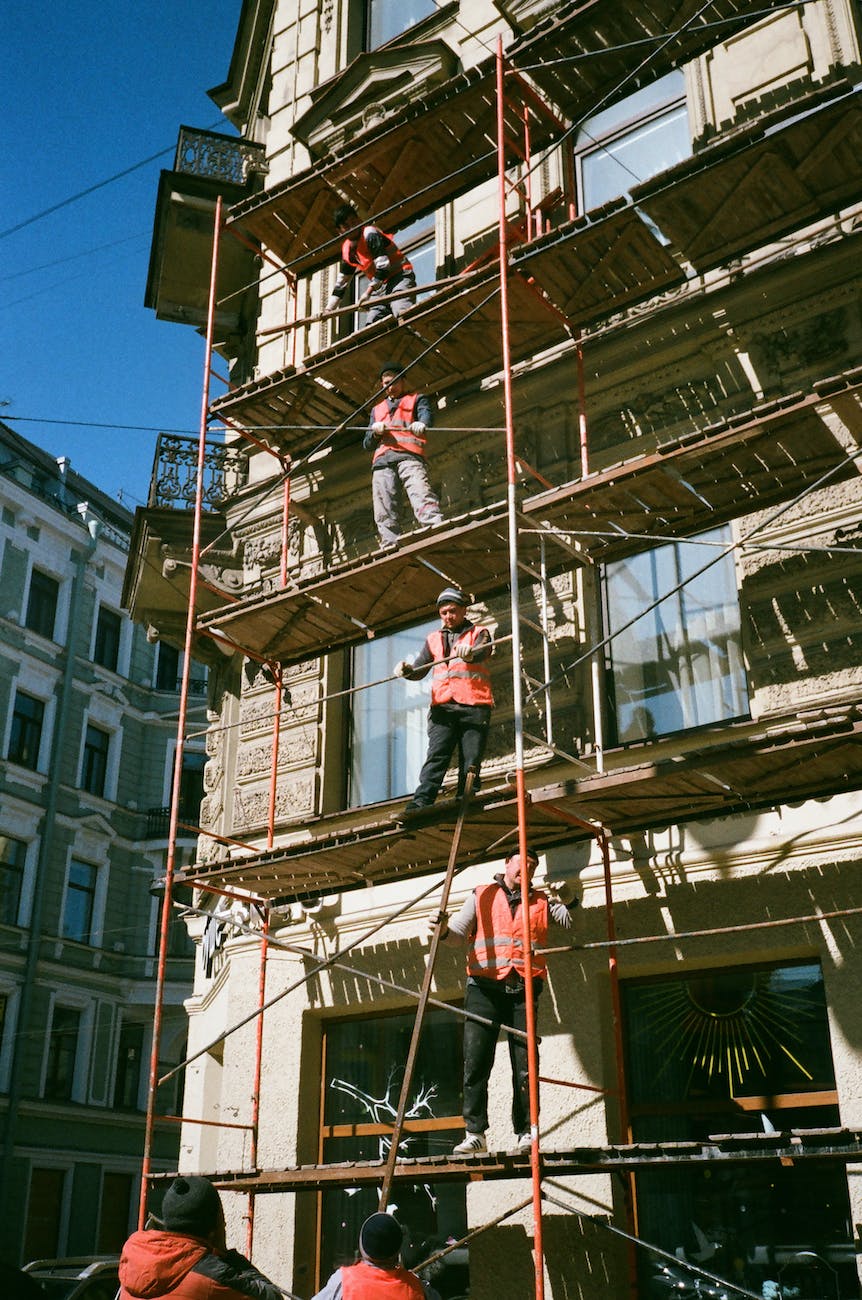
Components of Scaffolding: Building the Foundation for Construction Success
Components of Scaffolding : Scaffolding is an essential element in the construction industry, providing a temporary structure that supports workers and materials during building projects. It’s not just about creating a platform for work; scaffolding ensures safety, accessibility, and efficiency on construction sites. In this article, we’ll delve into the various components of scaffolding, exploring how each part contributes to the overall structure and functionality.
Introduction
Scaffolding is the backbone of any construction project, providing a secure working environment for builders at various heights. It comprises a multitude of components, each with a unique role to play in ensuring the safety and efficiency of the construction process.
Base Plates and Sill Uprights: Laying the Foundation
At the core of any scaffold are the base plates and sill uprights. These components provide stability and distribute the weight evenly across the ground. The base plates prevent the scaffold from sinking into the soil, while the sill uprights act as the initial vertical supports.
Standards: Vertical and Load-Bearing Elements
Standards, or vertical posts, are the primary load-bearing elements of the scaffold. They dictate the height of the scaffold and provide vertical support. These standards are anchored to the base plates and extend upward to connect with ledgers.
Ledgers and Transoms: Horizontal Support
Ledgers are horizontal components that connect standards, providing lateral support. Transoms, on the other hand, are horizontal tubes that run perpendicular to the ledgers, enhancing the overall stability of the scaffold.
Braces: Reinforcing Stability
Braces are diagonal components that connect the standards and ledgers, reinforcing the structural integrity of the scaffold. They prevent swaying and ensure that the scaffold remains steady during work.
Platforms: Where Work Happens
Platforms are the working areas where construction activities take place. They are created by placing wooden planks or metal decks on the ledgers and transoms, providing a safe space for workers and materials.
Toeboards and Guardrails: Safety First
Safety is paramount on construction sites, and toeboards and guardrails play a crucial role in preventing falls. Toeboards are placed along the edges of platforms to prevent tools and materials from falling. Guardrails provide an additional layer of protection for workers.
Ties: Securing the Scaffold
Ties are used to secure the scaffold to the building or structure under construction. They prevent the scaffold from swaying and maintain its stability. Different types of ties are used depending on the scaffold’s height and location.
Couplers: Connecting the System
Couplers are the connectors that hold the various components of the scaffold together. They come in different types, such as swivel couplers and right-angle couplers, and ensure that the scaffold is structurally sound.
Wheels and Casters: Mobility and Flexibility
In some cases, scaffolds need to be mobile. Wheels and casters can be attached to the base plates, allowing the scaffold to be easily moved from one location to another. This is particularly useful for projects that require frequent adjustments.
Weather Protection: Shielding from the Elements
Weather protection components, such as sheeting and netting, shield workers from adverse weather conditions. They prevent rain, wind, and debris from affecting the construction process, creating a safer and more comfortable environment.
Scaffold Accessories: Enhancing Functionality
Various accessories can be added to scaffolds to enhance their functionality. These include ladder beams for vertical access, adjustable bases for uneven terrain, and debris netting for added safety.
Scaffolding Types: Adapting to Needs
Different construction projects require different types of scaffolding. Some common types include supported scaffolds, suspended scaffolds, and rolling scaffolds. Each type is designed to cater to specific project needs and site conditions.
Safety Measures: Protecting Workers
Ensuring the safety of workers is a top priority in the construction industry. Proper training, regular inspections, and adherence to safety regulations are essential to prevent accidents and injuries on scaffolding.
Conclusion
Scaffolding is the backbone of construction projects, providing the necessary support and accessibility for workers to carry out their tasks efficiently and safely. With its diverse range of components, scaffolding systems can be tailored to meet the unique requirements of each project, ensuring successful outcomes.
FAQs
- Are there weight limits for scaffolds? Scaffolds are designed to support specific loads, and exceeding those limits can lead to instability. It’s important to adhere to weight guidelines provided by manufacturers.
- Can scaffolding be used for interior projects? Absolutely! Scaffolding is versatile and can be used for both interior and exterior projects, offering safe access to elevated areas.
- Do all scaffolds require ties? Ties are essential for taller scaffolds to prevent swaying. Smaller scaffolds might not require ties, but safety precautions should always be a priority.
- What’s the lifespan of a scaffold? The lifespan depends on factors like material quality, maintenance, and usage. Regular inspections and repairs can extend a scaffold’s lifespan.
- Can workers assemble scaffolds themselves? Scaffold assembly should be done by trained professionals. Incorrect assembly can lead to accidents. Always rely on skilled workers for scaffold setup.
























